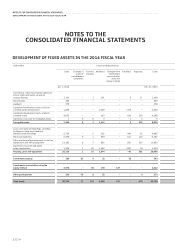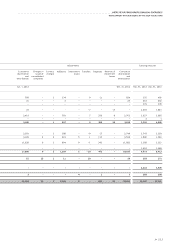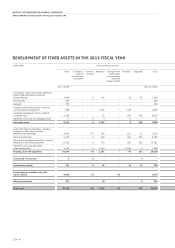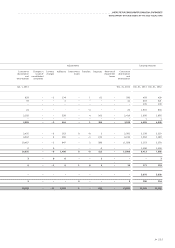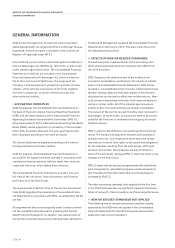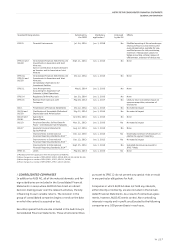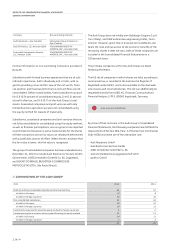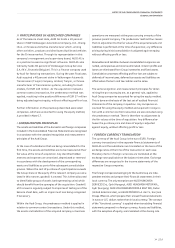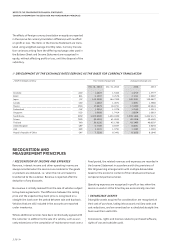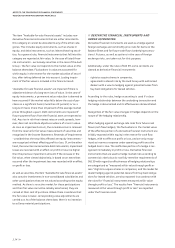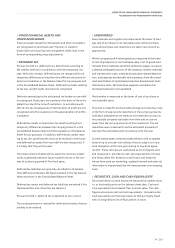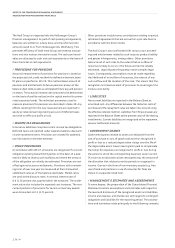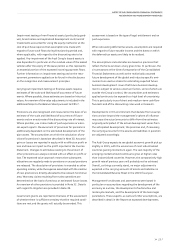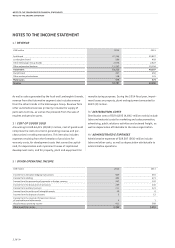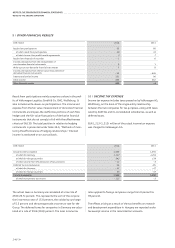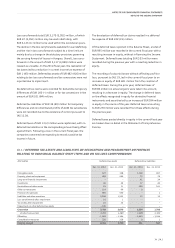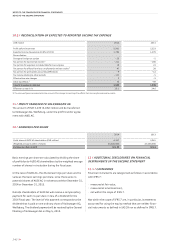Audi 2014 Annual Report Download - page 232
Download and view the complete annual report
Please find page 232 of the 2014 Audi annual report below. You can navigate through the pages in the report by either clicking on the pages listed below, or by using the keyword search tool below to find specific information within the annual report.
NOTES TO THE CONSOLIDATED FINANCIAL STATEMENTS
RECOGNITION AND MEASUREMENT PRINCIPLES
232
>>
/
IMPAIRMENT TESTS
Fixed assets are tested regularly for impairment as of the
balance sheet date.
With regard to impairment testing of goodwill and of other
intangible assets, the Audi Group in principle reports the
higher of value in use and fair value less costs to sell of the
respective cash generating units (brands and/or products). The
calculation of value in use is based on current planning prepared
by the management. This planning is based on expectations
regarding the future development of the respective markets,
market shares and profitability of the products. The planning
period covers a period of five years. Plausible assumptions about
future development are made for the subsequent years. The
planning premises are in each case adjusted in line with current
findings. Appropriate assumptions based on macroeconomic
trends and historical developments are taken into account.
Cash flows are, in principle, calculated on the basis of the
expected growth rates in the sales markets concerned. Up to
the end of the detailed planning period, growth in the operat-
ing profit of the two cash generating units Automotive and
Motorcycles is expected. Estimated cash flow following onto
the detailed planning period is based on an annual rate of
growth of 1.0 (1.0) percent in the Automotive unit and
1.0 (1.5) percent in the Motorcycles unit.
When testing goodwill and other intangible assets with indefi-
nite and limited useful lives, essentially capitalized develop-
ment costs, in the two cash generating units Automotive and
Motorcycles business for impairment, the value in use is
determined using the following average cost of capital (WACC)
before taxes:
in percent
2014 2013
Automotive segment 6.1 6.6
Motorcycles segment 7.1 8.1
The cost of capital is calculated on the basis of an interest rate
for risk-free investments. As well as a market risk premium,
specific peer group information for beta factors, the debt ratio
and borrowed capital interest rate are taken into account.
Impairment tests are carried out for development activities,
acquired property rights, and property, plant and equipment
on the basis of expected product life cycles, the respective
revenue and cost situation, current market expectations and
currency-specific factors.
Impairment losses pursuant to IAS 36 are recognized where
the recoverable amount, i.e. the higher amount from either
the continued use or the disposal of the asset in question, has
declined below its carrying amount. If necessary, an impair-
ment loss resulting from this test is recognized.
Sensitivity analyses have shown that, even in the case of differ-
ing key assumptions within a realistic framework, there is no
need to recognize an impairment for goodwill and other intan-
gible assets with an indefinite useful life.
If the reason for a previously recorded impairment loss ceases
to exist, the asset is written up to the recoverable amount but
to no higher than the amount of the amortized cost of purchase
or construction. Any impairment of goodwill is never reversed.
/
FINANCIAL INSTRUMENTS
Financial instruments are contracts that create financial assets
for one party and, at the same time, a financial debt or equity
instrument for the other party.
Financial instruments are recognized and measured in accor-
dance with IAS 39.
According to this, financial instruments are divided into the
following categories:
>available-for-sale financial assets,
>loans and receivables,
>held-to-maturity investments,
>financial assets measured at fair value through profit or loss.
The Audi Group does not have any financial assets that fall into
the category of “held-to-maturity investments.”


